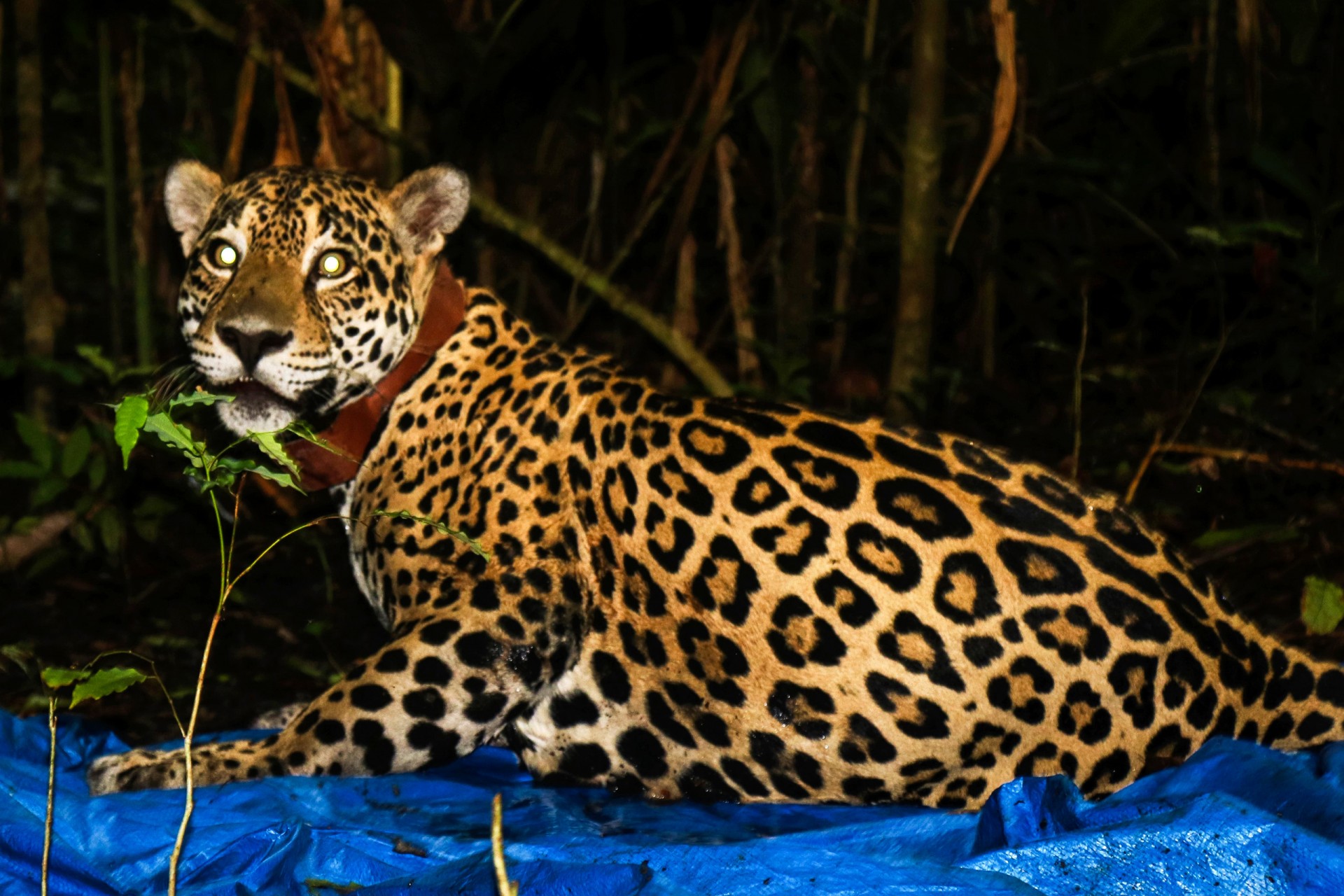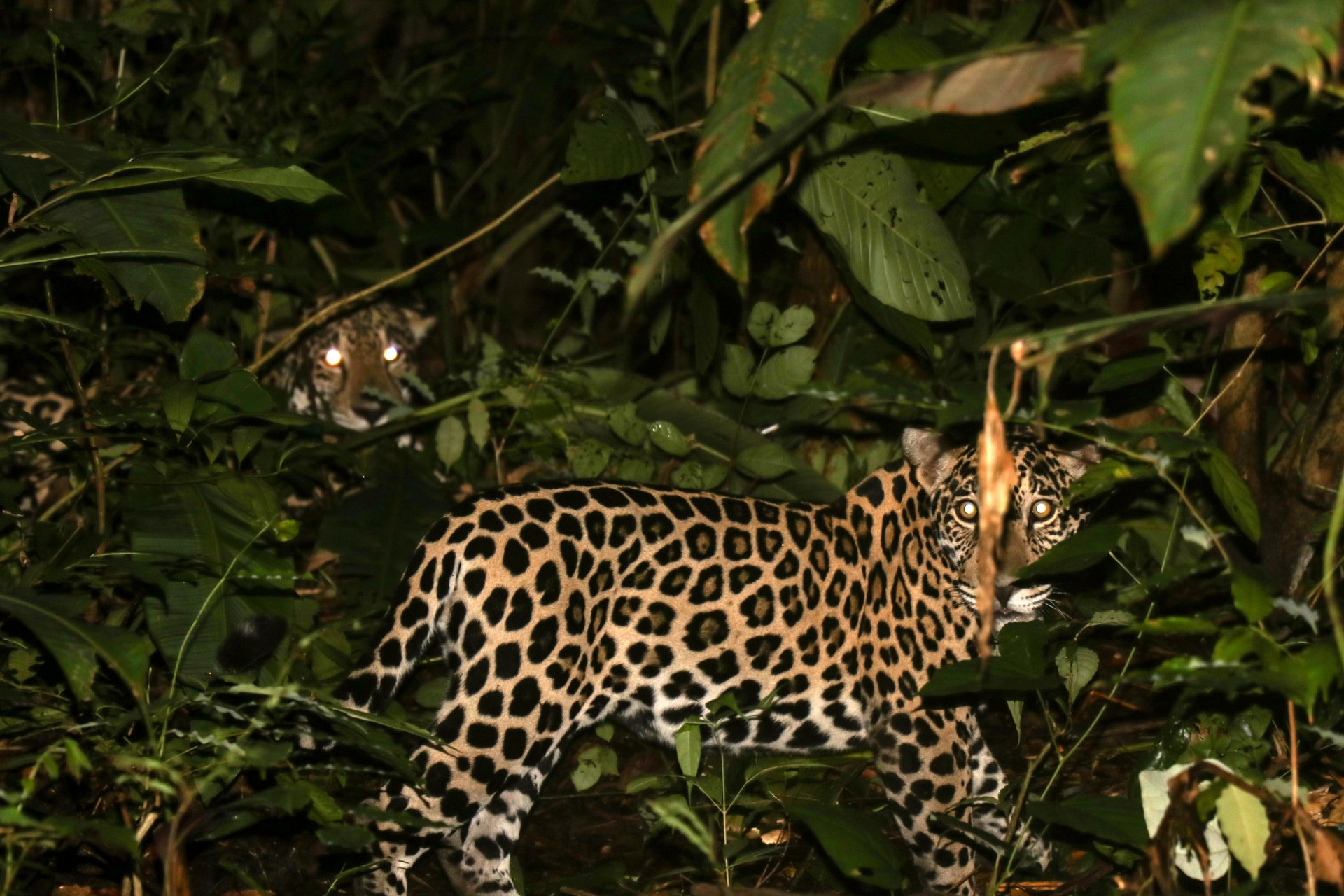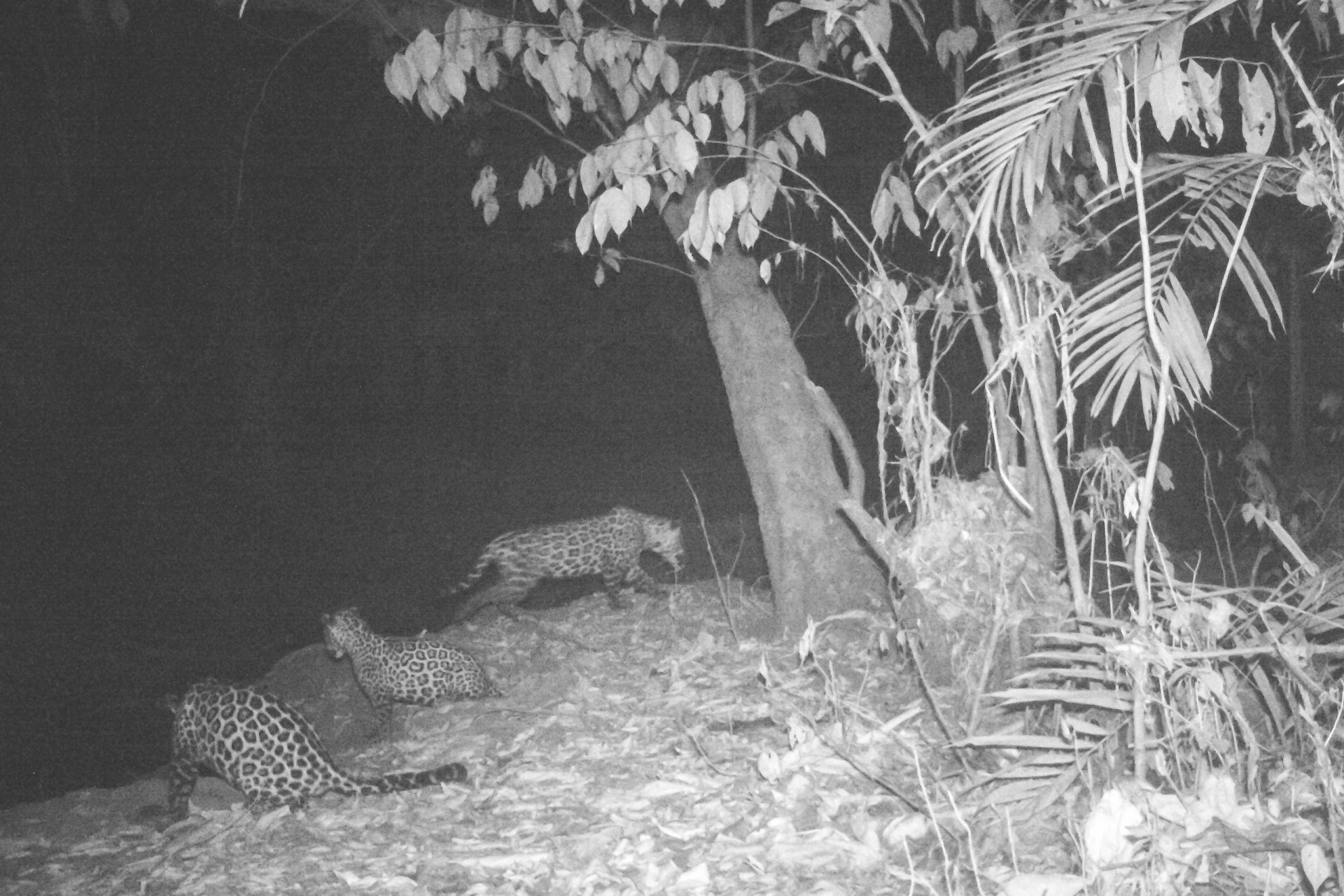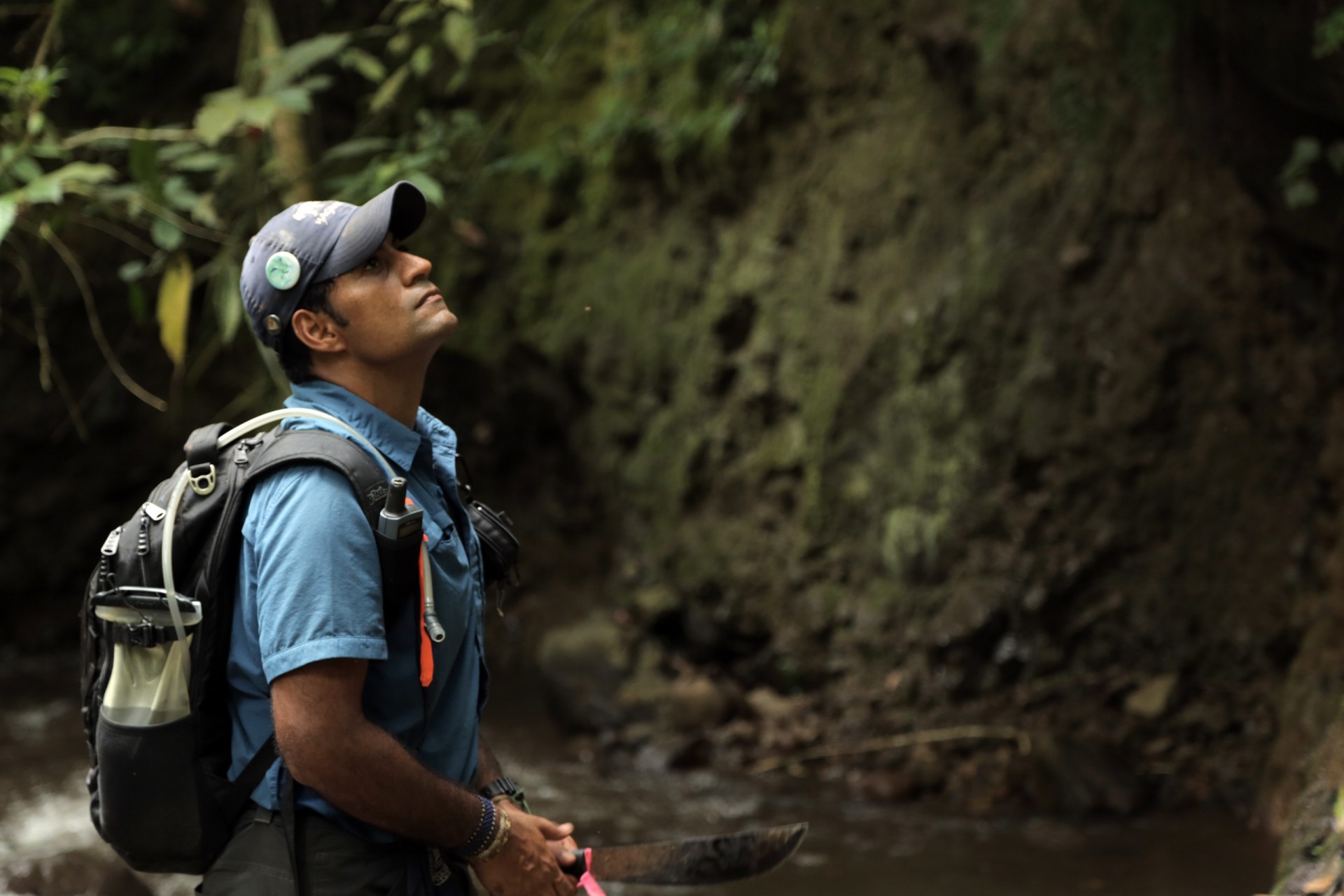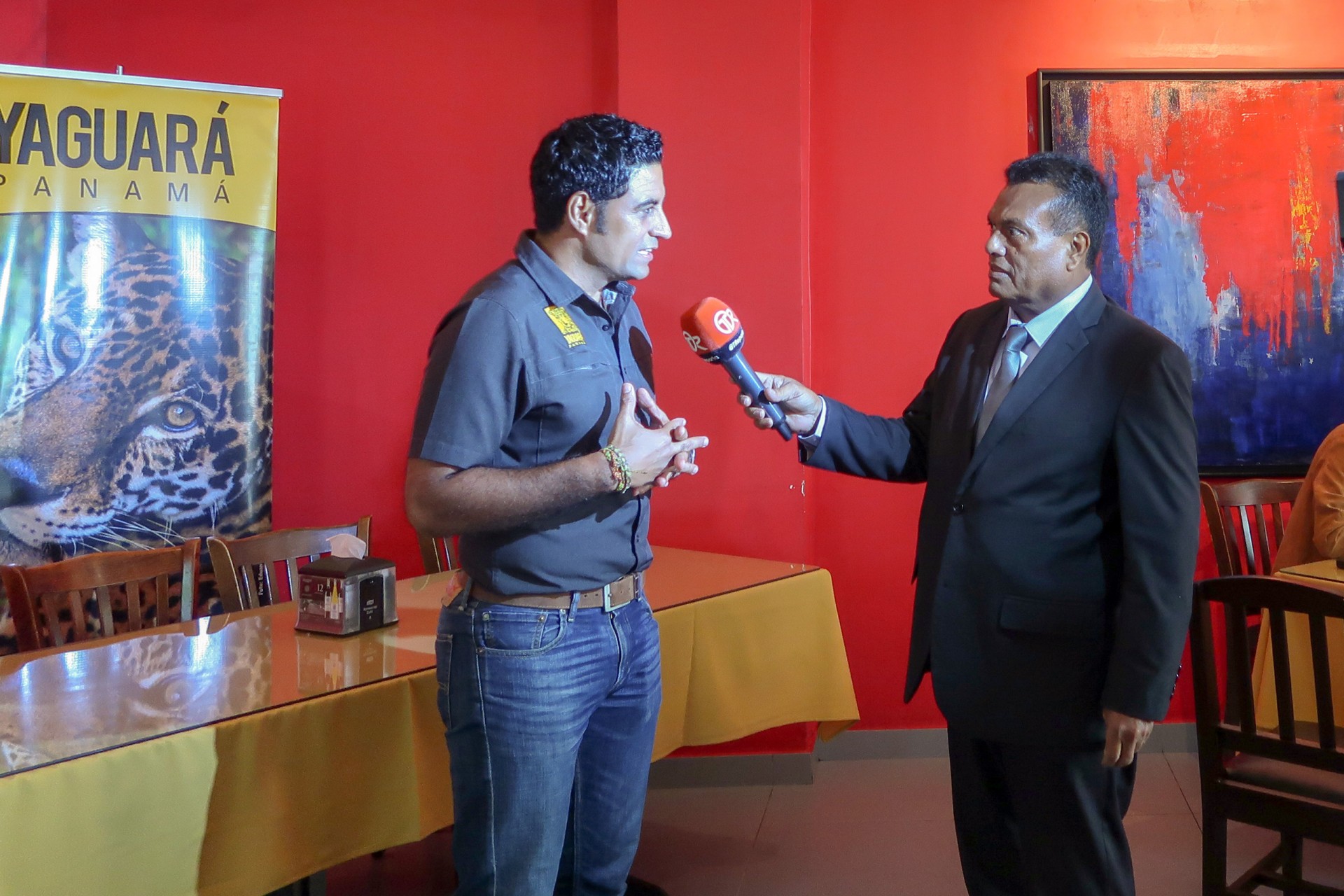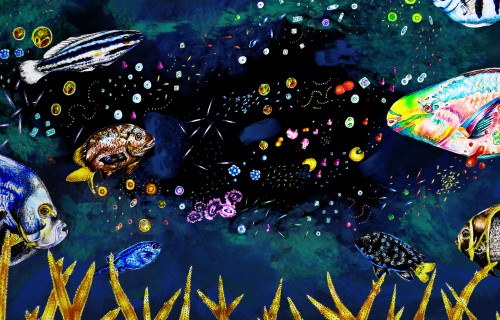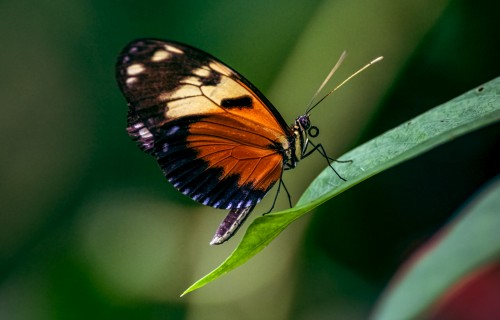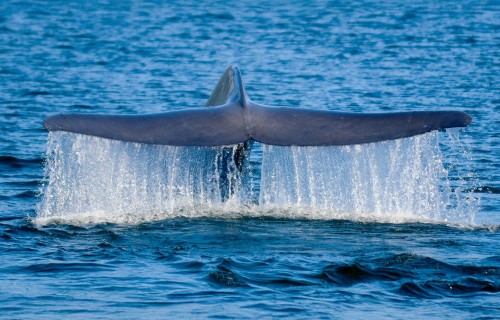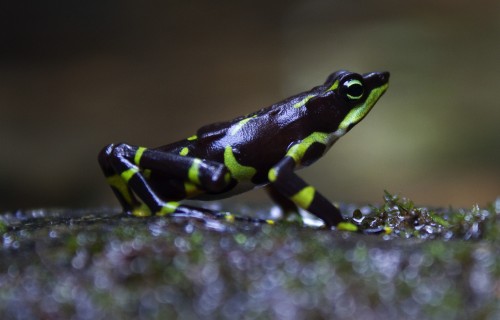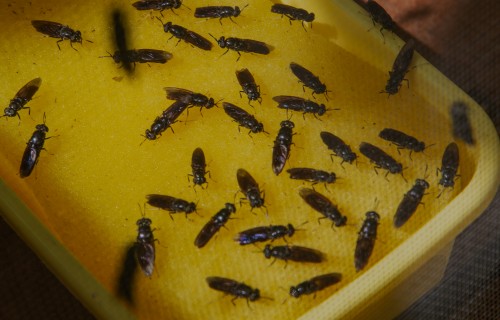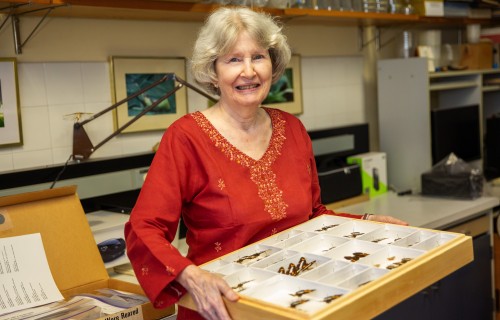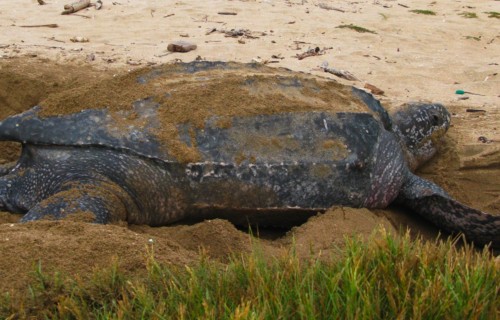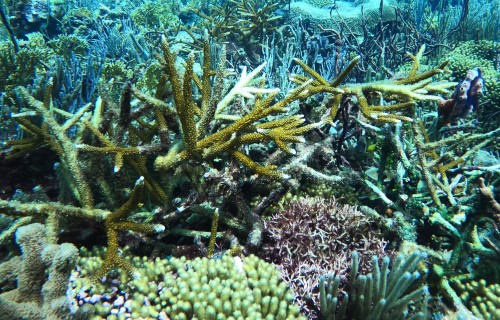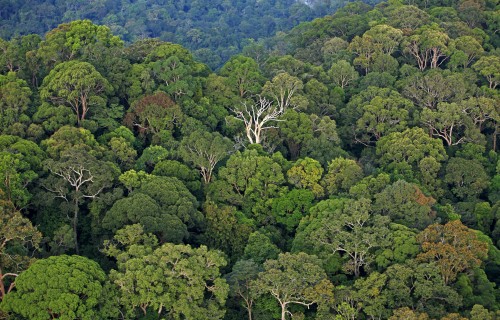Above the tropical forest canopy,
sensors capture the fluxes of gases
between the trees and the atmosphere
Hope for
Chucunaque
First Jaguar in Panama
fitted with GPS transmitter
Darien
Images credit: Yaguará Panamá
After years of catching jaguars only in camera-trap images, Ricardo Moreno, STRI research associate and National Geographic Emerging Explorer, and a team of 20 biologists and community members were able to catch a jaguar and fit it with a transmitter that will help researchers conserve these majestic cats in the wild.
Ricardo Moreno, research associate at the Smithsonian Tropical Research Institute and National Geographic Emerging Explorer, along with scientists from the Yaguará Panama Foundation, announced that a female jaguar called Chucunaque is the first jaguar in Panama to carry a GPS tracking collar.
“This is an historic moment for science in Panama,” Moreno said. “This is the first time that we have succeeded in placing a GPS collar on a jaguar in order to track its movements and understand how long it stays in an area. Not only will this help to generate more information about this species, but it will also improve strategies for its conservation.”
After her capture and sedation by veterinarians, measurements indicated that Chucunaque is approximately 4-6 years old, weighs 55 kilos (120 pounds) and is in good physical condition. She is caring for two, approximately 9-month-old, kittens, which remained in the area as researchers fitted their mother with a GPS collar and reversed the effects of the anesthesia. The collar is designed to fall off after a year of monitoring.
Specialists continue to monitor her condition to ensure her wellbeing. The team began to obtain camera trap photos and satellite positions shortly after her release and were also able to track her for a short time from the air from a helicopter provided by Panama Air Adventures.
Chucunaque, named for Panama’s longest river, is from Darien Province, where, despite the designation of large areas as national parks and indigenous reserves, tropical forest continues to be cleared for timber and cattle pasture. The largest population of jaguars (Panthera onca) in the country lives this area of the Mesoamerican Biological Corridor connecting high biodiversity regions of Central and South America. GPS monitoring of additional jaguars, and environmental education in local communities is part of a strategy to conserve the region’s wildlife.
The largest cat in the Americas, the jaguar is one of the most charismatic tropical forest species and the size of the jaguar population is considered to be an indicator of the environmental heath of an entire ecosystem. Jaguar conservation activities also protect other forest species and water supplies.
Considered to be critically endangered, and protected by Panamanian law, 40 percent of the jaguar’s natural habitat in Panama has been lost. Primarily for this reason and also as a result of the scarcity of prey animals, the conflict between jaguars and cattle ranchers, illegal hunting and illegal trade, jaguar populations continue to decline precipitously. In Panama, this species is considered to be critically endangered according to national legislation.
The team will use satellite-based technology to track her movements and determine her home range and habitat use. Information about her location within a landscape highly-modified by human activity will guide conservation efforts in this narrow region connecting North and South America.
“This technology lets us locate and protect Chucunaque and her two kittens, and to organize educational and other activities to improve the co-existance of people with this amazing species,” said Moreno.
The viceminister of the environment, José Luis Acosta, emphasized that “Panama is vital for maintaing the connectivity among the great populations of jaguars on the American continent. Therefore, today’s annoucement demonstrates how coordinated environmental protection efforts by the government, the local scientific community and local communities may result in important contributions to the protection of biodiversity in Panama and the región.
The Project, “Using technology to minimize conflicts between humans and Panama’s large felines,” was financed by Panama’s government institute of science and technology, SENACYT with support from the Ministry of the Environment, the border police SENAFRONT, the Ecological Police, the United Nations Development Programs small donations program, Howard Hughes Medical Institute (HHMI) and the Smithsonian Tropical Research Institute.
Biologist Ricardo Moreno led the team of more than 20 biologists and Panamanian veterinarians, accompanied by local residents. In addition, they worked with Latin American veterinary specialists, especially Ivonne Cassaigne, and biologist and wild feline specialist, Antonio de la Torre from the National Alliance for Jaguar conservation in Mexico.
For the last two years, Fundación Yaguará Panama has been using GPS collars to monitor other species of wild cats such as ocelots (Leopardus pardalis), pumas (Puma concolor) as well as peccaries (Tayassu pecari) and coyotes (Canis latrans).


